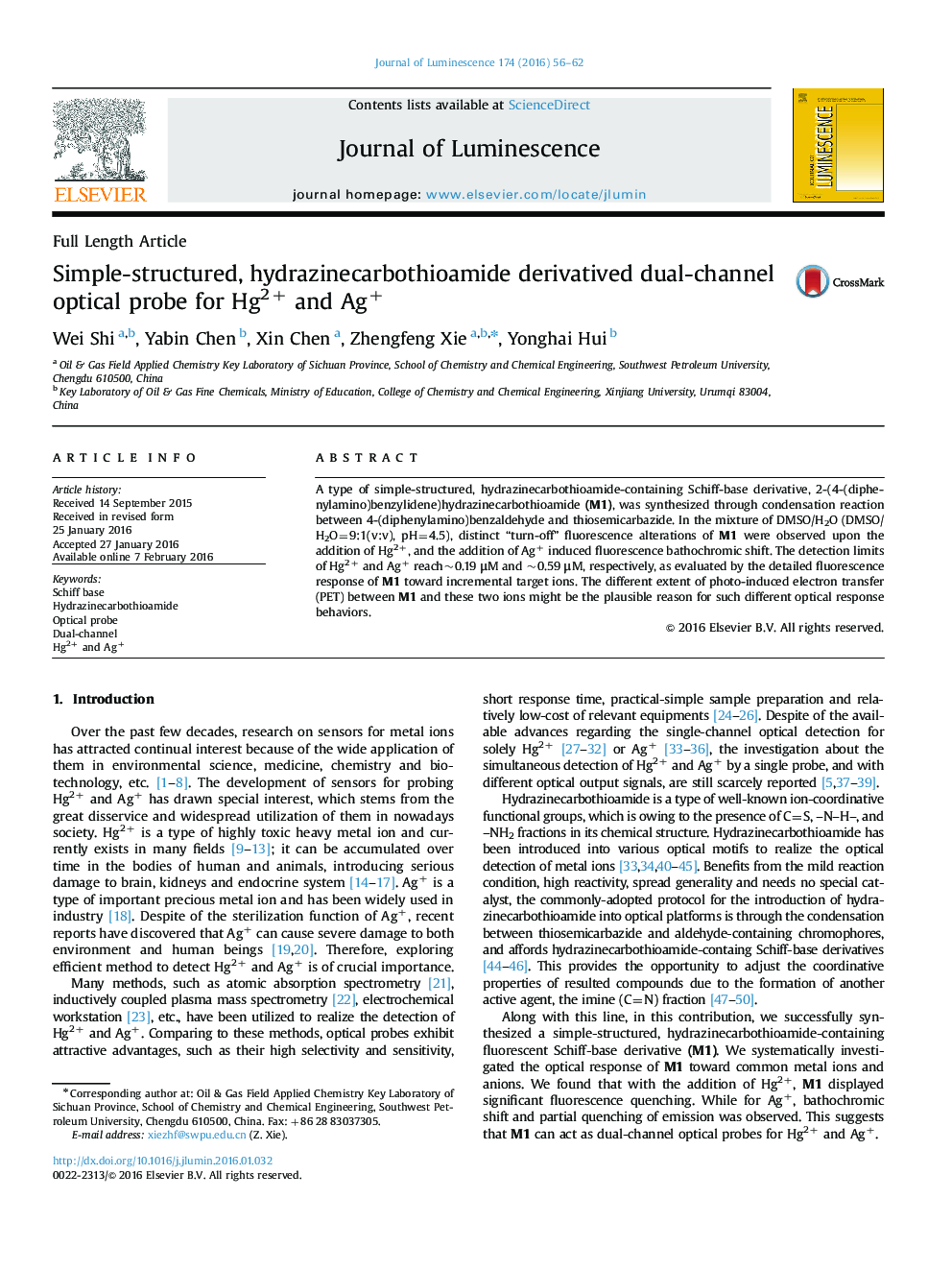| Article ID | Journal | Published Year | Pages | File Type |
|---|---|---|---|---|
| 5398487 | Journal of Luminescence | 2016 | 7 Pages |
Abstract
A type of simple-structured, hydrazinecarbothioamide-containing Schiff-base derivative, 2-(4-(diphenylamino)benzylidene)hydrazinecarbothioamide (M1), was synthesized through condensation reaction between 4-(diphenylamino)benzaldehyde and thiosemicarbazide. In the mixture of DMSO/H2O (DMSO/H2O=9:1(v:v), pH=4.5), distinct “turn-off” fluorescence alterations of M1 were observed upon the addition of Hg2+, and the addition of Ag+ induced fluorescence bathochromic shift. The detection limits of Hg2+ and Ag+ reach~0.19 μM and ~0.59 μM, respectively, as evaluated by the detailed fluorescence response of M1 toward incremental target ions. The different extent of photo-induced electron transfer (PET) between M1 and these two ions might be the plausible reason for such different optical response behaviors.
Keywords
Related Topics
Physical Sciences and Engineering
Chemistry
Physical and Theoretical Chemistry
Authors
Wei Shi, Yabin Chen, Xin Chen, Zhengfeng Xie, Yonghai Hui,
